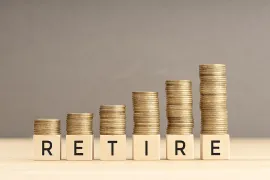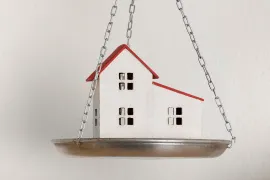This Ontario woman should use her cash to get her mortgage under control heading into retirement
Ella is worried about the impact of interest rate increases on her mortgage payments

If Ella's mortgage rate were to double, her $2,990 monthly payment would rise to $3,429
In Ontario, a woman we’ll call Ella, 51, is raising two children, ages 12 and 13. A sales rep for a company that makes construction materials, Ella brings home $8,000 per month plus a bonus averaging $2,500 per month after tax. She also receives $500 per month in child support payments per child, for a total of $11,500 per month after tax.
Ella has a $1.5-million house and investment assets that add up to $1,305,174, including a life insurance policy with a $40,000 cash surrender value. After debts, including her $544,561 home mortgage, her net worth works out to $2,300,613. She’d like to have $55,000 per year after tax in retirement.
Comfortable now, Ella worries that she could be caught in a squeeze when interest rates rise.
She is not due to pay off her mortgage for another 18 years, well into her retirement, and if the current 1.79 per cent interest rate increases as expected, that could take even longer.
If her mortgage rate were to double, her $2,990 monthly payment would rise to $3,429. That would be 43 per cent of her base $8,000 monthly take-home income. She worries that her debt could then be difficult to support.
Family Finance asked Derek Moran, head of Smarter Financial Planning Ltd. in Kelowna, B.C., to work with Ella.
Paying down the mortgage
Ella has options for enhancing her retirement security.She has $536,374 cash that could be used to pay off most of the mortgage very soon, though such a payment could incur a hefty penalty, Moran notes. She could instead perform the well-known manoeuvre of paying down the loan to the annual penalty-free prepayment limit, $110,000 in her case, and then borrow that amount back for investment. She would reduce the mortgage while maintaining the same level of investment income, plus the interest on the loan would now be tax deductible.
There is some risk if the assets she buys flop, but, if she invests conservatively, doing this just once would cut her amortization period to 14 years, Moran explains. That would make her mortgage-free at 65. She needs to be mortgage free at age 60, so she needs to make a further lump sum of $130,000. Assuming she makes the move, the $240,000 payments would drop her cash to $296,374.
Designated savings
When Ella turns 60, her children will be 21 and 22, but they will start post-secondary education while still living at home. She puts $208 per month into an RESP account, $2,500 per year, and adds the Canada Education Savings Grant, which works out to the lesser of $500 or 20 per cent of contributions subject to a $7,200 lifetime max for each beneficiary. Her ex-husband makes the same contributions. The RESP has $164,000 now and will easily add another $50,000 per child with contributions and growth. So there is no issue with the kids’ post-secondary education costs, Moran notes.Ella was not a resident of Canada for 15 years after age 18, so her CPP may only be $7,225 per year at 65, Moran estimates. At age 65, she will have 47 minus 15 of the required 40 years for full benefits. That’s 32/40 or 80 per cent of the present OAS maximum benefit, $7,707 or $6,166 per year.
Ella’s TFSA contribution limit is $60,000, adjusted for residence outside of Canada. She has no TFSA now. She has the cash to fill her space and should do so, Moran advises. If she then adds $6,000 per year for nine years, it will become $141,070 by age 60 and then generate $6,988 tax free for the following 30 years to her age 90.
Ella’s RRSPs add up to $564,800. If she adds $25,000 from her cash plus $25,000 per year from earnings for nine years, and the balance grows at six per cent per year less three per cent for expected inflation, it will become $998,533 at her age 60 in 2022 dollars and then generate $49,461 income stream before tax for the following 30 years to her age 90.
If Ella makes these allocations, she should have $221,374 left. If that balance is invested in a taxable account and grows at our assumed three per cent, it will become $288,843 at her age 60. That sum would generate taxable income of $14,307 for 30 years to her age 90.
From age 60 to age 65, assuming that Ella has left her job, that child support payments have ended, and that she has no earned income, her income would be $49,461 from her RRSPs, $6,988 from her TFSAs, and $14,307 in non-registered investment income. That’s a total of $70,756. After tax at an average rate of 18 per cent on all but TFSA cash flow, she would have $58,660 per year or $4,888 per month to spend. With the removal of $2,990 in monthly mortgage payments and all debt payments, her spending would decline to $3,719 per month.
At age 65, Ella could add $7,225 CPP and $6,166 OAS for total income of $84,147. After 19 per cent tax on all but $6,988 TFSA cash flow, she would have $70,261 per year to spend per year or $5,855 per month.
Budget risks
Inflation and her mortgage interest payable could rise. That might take a few years to happen in an inflationary environment, but higher debt service charges would be less on a lower outstanding mortgage balance that she might renegotiate or shop among lenders. Time would mitigate this interest rate.Finally, in a serious cost squeeze, perhaps from illness, Ella could downsize her $1.5-million house to obtain $1.425 million after five per cent selling costs, then buy a home in the $1 million range and reap the difference. $425,000 invested at three per cent after inflation would generate $12,750 per year indefinitely.
“It’s seldom a retirement plan is bulletproof, but this one comes close,” Moran explains.
Retirement stars: 5 *****out of 5
Financial Post
( C) 2022 The Financial Post, Used by Permission

































